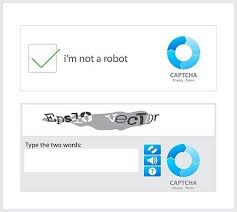The Evolution of CAPTCHA: Securing the Web, One Puzzle at a Time
 Barakah
Barakah 
Imagine you're trying to access a website, but before you proceed, you're asked to identify blurry letters or click on images of traffic lights or random objects. This small but familiar task is called CAPTCHA, a tool used to verify that you're human and not a bot. It may seem annoying but CAPTCHA serves a much deeper purpose. It helps in securing websites from spam, fraud, and malicious attacks. In this article, we will explore how CAPTCHAs work,the purpose and their evolution.
WHAT IS CAPTCHA ?
CAPTCHA, short for "Completely Automated Public Turing test to tell Computers and Humans Apart" is a type of security measure used to determine whether the user of a website or service is a human or a bot.
There are different forms in which CAPTCHA occurs:-
• Text-based CAPTCHA
• Image-based CAPTCHA
• Audio CAPTCHA
• Behavioural CAPTCHA
• Logical CAPTCHA
And so many others.
Each type of CAPTCHA addresses the need to differentiate humans from bots while minimizing user friction.
Now,we need to look at why websites use CAPTCHA.
WHY WEBSITES USE CAPTCHA
CAPTCHA is primarily used to protect websites from malicious activities such as spamming, data scraping, and brute-force attacks. Automated bots can strain website resources, disrupt services, or exploit vulnerabilities by flooding comment sections, submitting fake forms, or trying to access accounts. CAPTCHA introduces challenges that only humans can solve, ensuring that tasks like account creation, posting comments, and transactions are performed by real users.
In addition to security, CAPTCHA improves user experience by stopping bots from overwhelming websites with irrelevant content. For instance, e-commerce sites use it to block bots from manipulating inventory or prices.
WHAT HAPPENS IF CAPTCHAs DIDN'T EXIST
If CAPTCHAs didn't exist, automated bots could easily overwhelm websites by performing tasks like spamming forms, creating fake accounts. This would lead to an increase in security breaches, fake content, and slower website performance, as websites would struggle to differentiate between legitimate users and malicious bots. As a result, user experience and online security would be significantly compromised.
EVOLUTION OF CAPTCHA
Over time, bots became more advanced, prompting the evolution of CAPTCHA.
• Traditional CAPTCHA: The earliest CAPTCHA involved distorted text that users had to type correctly. However, bots became better at recognizing patterns, making it less effective.
• reCAPTCHA (v1): Introduced by Google, reCAPTCHA involved users typing words from scanned documents, digitizing books while distinguishing humans from bots. This version served a dual purpose but still involved user input.
• reCAPTCHA v2 ("I'm not a robot"): This is a more user-friendly version as it introduced a simple checkbox that users clicked to confirm they weren't bots. Behind the scenes, it analyzed user behavior like mouse movement and browsing history
• NoCAPTCHA reCAPTCHA: This innovation minimized user interaction further. Only suspicious behavior triggered additional verification, like identifying objects in images. Most users only needed to click a checkbox, making the process smoother while maintaining security.
• reCAPTCHA v3: This version is completely invisible to users, running in the background. It assigns a risk score based on user behavior, allowing websites to decide when to challenge users, thus streamlining the experience without active user involvement.
By proving you're human, you're helping to safeguard your personal data, keep websites from getting spammed, and maintaining the security of the online world. So, take a deep breath, solve that puzzle, and proudly declare: 'I'm a human!'
Subscribe to my newsletter
Read articles from Barakah directly inside your inbox. Subscribe to the newsletter, and don't miss out.
Written by
